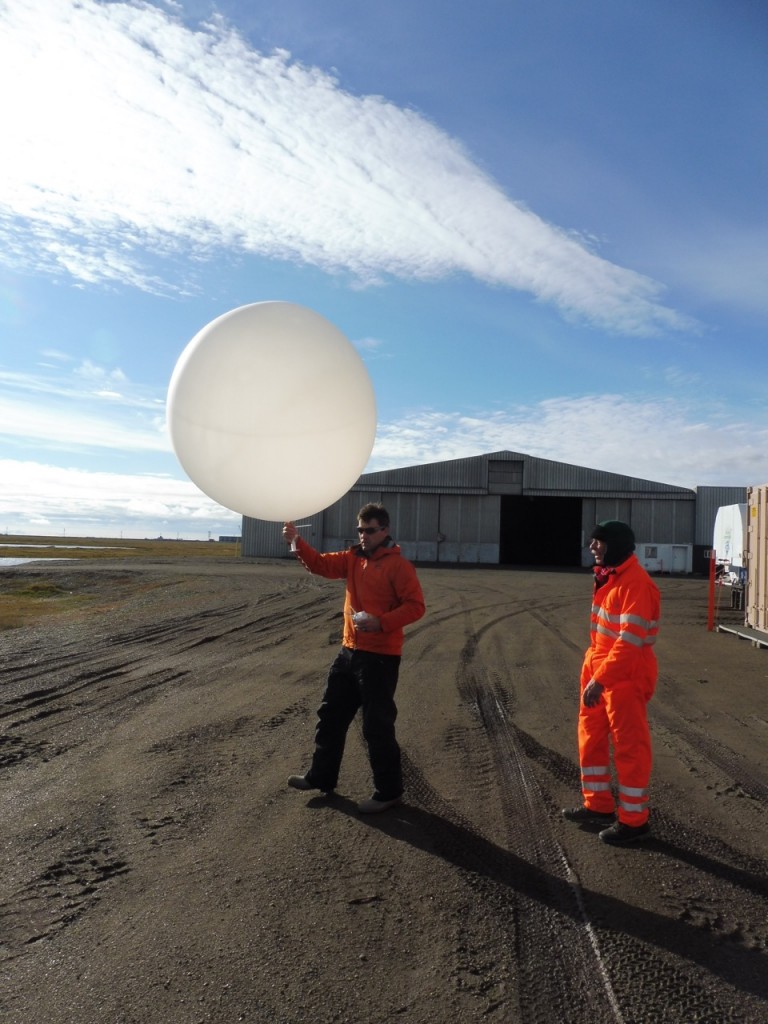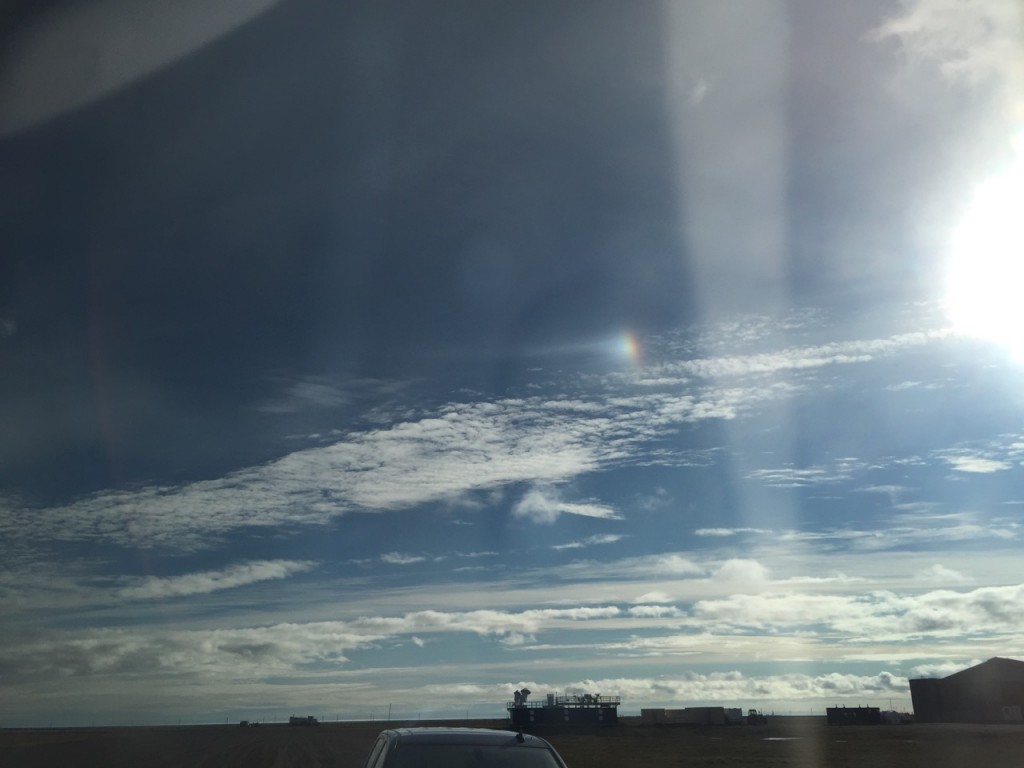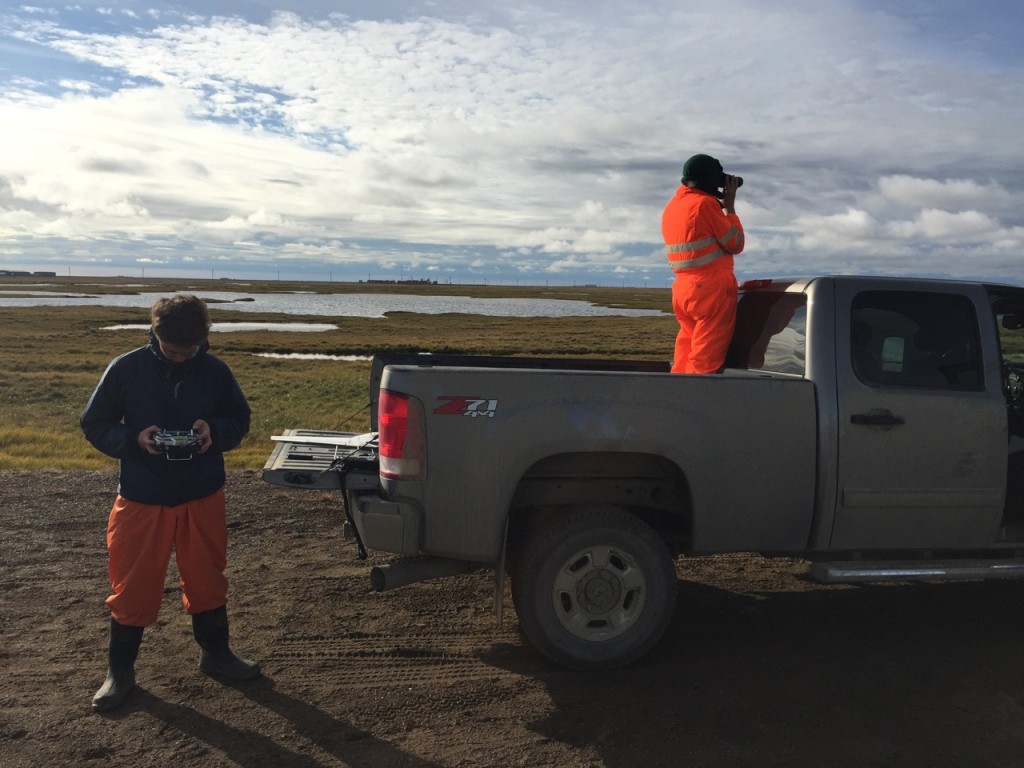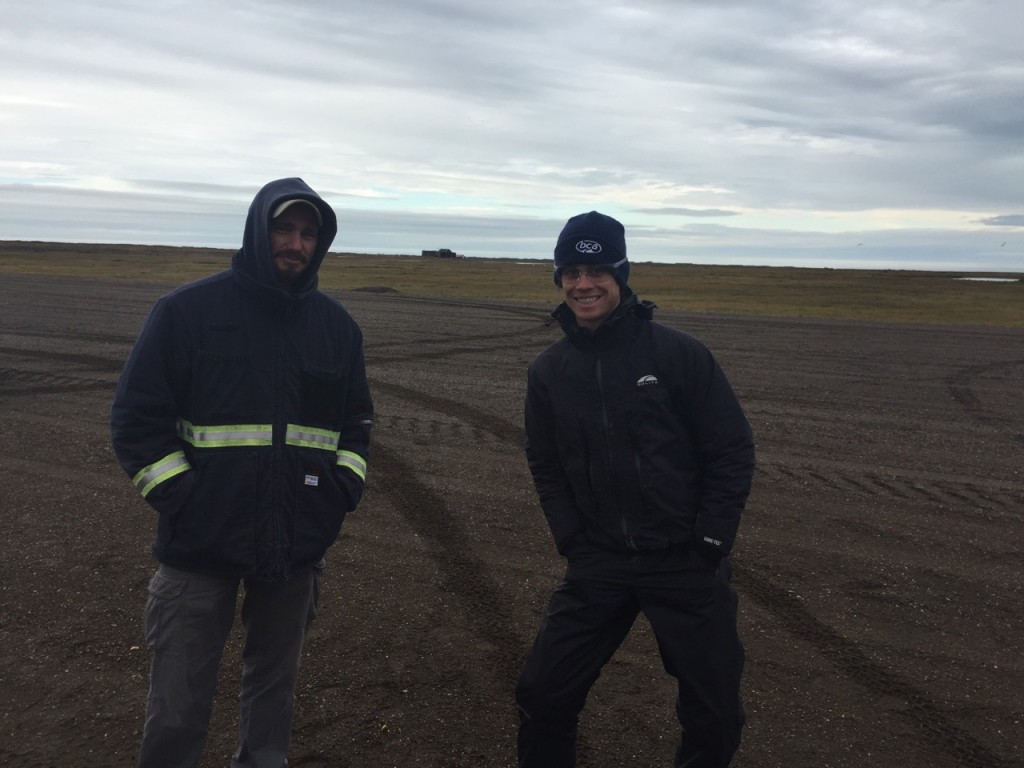This morning I made the decision to transition to the operational mode that we had been hoping to execute from day one. The long hours of troubleshooting the radar issues have been wearing on everyone and today we split up into two teams, with each team taking two profiles (one per hour) at a time and then trading off with the other team. Doing so has ensured that everyone gets some opportunity for “down time”, and even after one day it is obvious that all are feeling better. Doing this allowed us to get eight solid profiles today before the rain and wind became too intense. During the downtime, I even had a chance to help Al release one of the twice-daily radiosondes (weather balloons) that the DOE ARM program launches from Oliktok!
So far, I haven’t mentioned much about Al Bendure’s role in this project. Al, who works for Sandia National Lab, has been a fantastic help, providing a constant wildlife watch, communicating with the Federal Aviation Administration (FAA) and other aviators about our flight activities, and periodically “talking shop” with his fellow pilots (Will and Nathan). The photos from previous blog posts show the sort of wildlife that can be found around here, so it is good to know that someone is keeping a watchful eye out while we have our heads down to make the scientific measurements! Thanks Al!
The other good news today is that Wessley King, the AMF3 site operator who spends a lot of time up here on the North Slope, was able to dodge drilling rigs to get to Deadhorse and pick up some packages that were sent up to us earlier this week from Boulder. These packages have some extra equipment which should help us better deal with the radar interference issue. We spent the rainy evening getting this stuff installed into one of our planes and the few test flights that we completed were very promising! Hopefully this will allow us to increase our automated flight, and take a bit of the burden of flying the aircraft off of Will and Nathan. More on this tomorrow!





